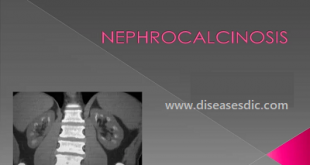What is called Nasoharyngeal Cancer?
Nasopharyngeal cancer is a type of head and neck cancer. It is sometimes called nasopharyngeal carcinoma or NPC. It is a disease of the nasopharynx, which is the air passage between the nose and the throat and lungs. It is located behind the nasal cavity and above the soft palate of the mouth. An opening on either side of the nasopharynx, called the Eustachian tube, leads into the middle ear on each side (see Medical Illustrations).
The nasopharynx contains several types of tissue. Each tissue type contains several types of cells and different cancers can develop from each kind of cell. For example, many types of NPC contain white blood cells, called lymphocytes. Therefore, the cancer is named after these lymphocytes and called lymphoepithelioma. The type of cell involved and other factors are important because they determine the seriousness of the cancer and the type of treatment needed.
Types of Nasopharyngeal Tumors
Several types of tumors can develop in the nasopharynx. Some of these tumors are benign (not cancer), but others are malignant (cancer). It’s important to talk with your doctor about what type of tumor you might have.
Nasopharyngeal carcinoma (NPC)
Most nasopharyngeal cancers are nasopharyngeal carcinoma (NPC). It is by far the most common cancer in the nasopharynx. Carcinoma is cancer that starts in the cells that line the internal and external surfaces of the body (called epithelial cells).
There are 3 types of NPC. They all start from epithelial cells that line the nasopharynx, but the cells of each type look different under a microscope:
- Non-keratinizing undifferentiated carcinoma (this is the most common type of NPC in the US.)
- Non-keratinizing differentiated carcinoma
- Keratinizing squamous cell carcinoma
The treatment is the same for all types of NPC. The non-keratinizing types tend to respond better to treatment, but the stage of the cancer – how far it has grown and spread – is often more important than the type in predicting a person’s outlook (prognosis).
Many NPCs also contain lots of immune system cells, especially white blood cells called lymphocytes. The term lymphoepithelioma is sometimes used to describe an undifferentiated NPC with many lymphocytes among the cancer cells. The presence of these cells does not usually affect the choice of treatment options. But they may help researchers develop new treatments, because they may be a clue to how the body attempts to fight the tumor.
Other cancers in the nasopharynx
Other types of cancers can also be found in the nasopharynx:
- Lymphomas can sometimes start in the nasopharynx. They are cancers of immune system cells called lymphocytes, which are found throughout the body, including in the nasopharynx. See Non-Hodgkin Lymphoma to learn more.
- Adenocarcinoma and adenoid cystic carcinoma are cancers that can start in the minor salivary glands in the nasopharynx. But these cancers are more commonly found in the nose (nasal cavity) or mouth (oral cavity). See Oral Cavity and Oropharyngeal Cancer, Nasal Cavity and Paranasal Sinuses Cancer, or Salivary Gland Cancer for more about these cancers.
Benign nasopharyngeal tumors
Benign nasopharyngeal tumors are fairly rare and tend to develop in children and young adults. These tumors do not spread to other parts of the body and are usually not life-threatening. They include tumors or malformations of the vascular (blood-carrying) system, such as angiofibromas and hemangiomas, and benign tumors of minor salivary glands within the nasopharynx.
Benign nasopharyngeal tumors don’t always need treatment. When they do, the treatment is not the same as for nasopharyngeal cancer. If you have a benign tumor, talk to your doctor about what to expect.
Pathophysiology
The detection of the Epstein-Barr virus (EBV) nuclear antigen and viral DNA in nasopharyngeal carcinoma has revealed that EBV can infect epithelial cells and is associated with their malignant transformation. Copies of the EBV genome have been found in cells of preinvasive lesions, suggesting that it is directly related to the process of transformation.
What causes Nasopharyngeal Cancer?
Experts aren’t exactly sure what causes nasopharyngeal cancer. However, certain risk factors can increase your chance of developing the disease, including:
- Epstein-Barr virus (EBV). This is the same virus that causes mononucleosis. EBV is common in people diagnosed with nasopharyngeal cancer. Even though the link between the two conditions is widely known, not all people who’ve had EBV will develop nasopharyngeal cancer.
- Salt-cured foods. People who eat diets rich in salt-cured meat and fish have a higher chance of developing nasopharyngeal cancer.
- Alcohol and tobacco use. Heavy smoking or drinking can increase your risk of nasopharyngeal cancer.
- Age. Though nasopharyngeal cancer can occur at any age, it’s most commonly diagnosed in people between the ages of 30 and 50.
- Race. Nasopharyngeal cancer is more common in people living in Southeast Asia, southern China and northern Africa. People who have immigrated to the United States from Asia also have a higher risk compared to American-born Asians.
- Sex. Men are about three times more likely than women to develop nasopharyngeal cancer.
- Family history. If you have a family member with nasopharyngeal cancer, you are more likely to develop the condition.
Risk factors
You are more likely to get this type of cancer if you:
- Are male
- Eat a diet rich in salt-cured fish and meats
- Have a family history of nasopharyngeal cancer
- Have certain genes linked to cancer development
- Have come in contact with EBV
Some, but not all, studies have found a higher risk of nasopharyngeal cancer in people who:
- Smoke
- Drink a lot of alcohol
- Work around wood dust or a chemical called formaldehyde
Symptoms of Nasopharyngeal Cancer
It’s often difficult to recognize nasopharyngeal cancer because the symptoms are similar to other, less serious conditions.
Also, many people with nasopharyngeal cancer don’t have any symptoms until the cancer reaches an advanced stage.
Symptoms of nasopharyngeal cancer can include:
- A lump in the neck that doesn’t go away after 3 weeks
- Hearing loss (usually only in 1 ear)
- Tinnitus (hearing sounds that come from inside the body rather than from an outside source)
- A blocked or stuffy nose (usually only blocked on 1 side)
- Nosebleeds
- Headaches
- Double vision
- Numbness in the bottom part of your face
- Swallowing problems
- A hoarse voice
- Unintentional weight loss
See a GP if you have any of these symptoms, particularly if they haven’t improved after 3 weeks.
It’s very unlikely they’ll be caused by nasopharyngeal cancer, but it’s best to get them checked out.
Complications
Nasopharyngeal carcinoma complications can include:
- Cancer that grows to invade nearby structures. Advanced nasopharyngeal carcinoma can cause complications if it grows large enough to invade nearby structures, such as the throat, bones and brain.
- Cancer that spreads to other areas of the body. Nasopharyngeal carcinoma frequently spreads (metastasizes) beyond the nasopharynx.
Most people with nasopharyngeal carcinoma have regional metastases. That means cancer cells from the initial tumor have migrated to nearby areas, such as lymph nodes in the neck.
Cancer cells that spread to other areas of the body (distant metastases) most commonly travel to the bones, lungs and liver.
Diagnosis
The doctor will examine your mouth, throat, ears and will use a small lighted mirror to examine your nasopharynx. The doctor will pass a thin flexible tube with a light at the end (flexible endoscope) into the nostril to look at the back of the nose. A local anesthetic spray might be used to numb your nose and throat. You will be instructed not to eat or drink anything for an hour afterwards, or until your throat is no longer numb.
If a tumor is suspected, the doctor will take a biopsy and a pathologist will examine the tissue under a microscope.
Pathologists classify nasopharyngeal cancer by the type of cell. There are three types:
- Keratinizing squamous cell carcinoma
- Non-keratinizing squamous cell carcinoma
- Undifferentiated or poorly differentiated carcinoma
The doctor also may order other tests, such as:
Physical examination and blood tests. During a physical examination, the doctor feels for any lumps on the neck, lips, gums, and cheeks. The doctor will look for any abnormalities in the nose, mouth, throat, and tongue, often using a light and/or mirror to get a clearer view. A blood test to check for antibodies against the EBV virus may be done at the same time.
Endoscopy. An endoscopy allows the doctor to see inside the body with a thin, lighted, flexible tube called an endoscope. The person may be sedated as the tube is inserted through the mouth or nose to examine the head and neck areas. Sedation is giving medication to become more relaxed, calm, or sleepy. When an endoscopy is done to look into the nasopharynx, it is called a nasopharyngoscopy.
Biopsy. A biopsy is the removal of a small amount of tissue for examination under a microscope. Other tests can suggest that cancer is present, but only a biopsy can make a definite diagnosis.
Neurological tests. During these examinations, the doctor tests a person’s nerve function, especially the sense of touch in their face and the motor function of certain nerves in the head and neck area.
Hearing test. The doctor may perform a hearing test if it seems that fluid could be in the middle ear.
Imaging studies to determine if the tumor has invaded nearby tissue or other organs in the body
- Orthopantomography (Panorex) is a panoramic X-ray of the upper and lower jaw. It shows a view from ear to ear and it helps determine if a tumor has grown into the jaw bone.
- CT scan. A special type of x-ray that makes a series of detailed pictures, with different angles, of areas inside the mouth and neck. A computer is linked to the x-ray machine. A dye may be injected into a vein or swallowed in a pill to help highlight the organs or tissues on the x-ray. This procedure is also called computed tomography, computerized tomography, or computerized axial tomography.
- MRI (magnetic resonance imaging). A machine that uses a magnet, radio waves, and a computer to make detailed pictures of areas inside the mouth and neck. This procedure is also called nuclear magnetic resonance imaging (NMRI).
- PET scan. During a positron emission tomography scan (PET), a small amount of radioactive glucose (sugar) is injected into a vein. The scanner makes computerized pictures of the areas inside the body. Cancer cells absorb more radioactive glucose than normal cells, so the tumor is highlighted on the pictures.
Stages of Nasopharyngeal cancer
Nasopharyngeal cancer staging is determined by several factors, including the size and location of the tumor and how far the cancer cells have spread. Here’s a general outline of the nasopharyngeal cancer stages:
- Stage 0: Cancer only affects the top layer of cells inside the nasopharynx.
- Stage 1: The tumor has grown into nearby structures, such as the back of the throat or the nasal cavity.
- Stage 2: At this stage, cancer has spread to one or more lymph nodes on one side of the neck.
- Stage 3: Cancer has spread to lymph nodes on both sides of the neck.
- Stage 4: The tumor has spread to the skull, eye, cranial nerves, salivary glands or lower part of the throat. At stage 4, nasopharyngeal cancer may also spread to distant parts of the body.
Nasopharyngeal Cancer Treatment
If you are diagnosed with nasopharyngeal cancer, you will need regular follow-ups with your medical team before, during, and after treatment.
Your treatment will depend on many things, including:
- Location of the tumor
- Stage of the tumor
- Your overall health
Treatment may include:
Radiation Therapy. Radiation therapy uses X-rays to kill cancer cells and stop them from growing. It is usually part of the standard treatment for early stage nasopharyngeal cancer.
One type called IMRT delivers high-dose radiation directly to the tumor while minimizing damage to nearby healthy tissue. It may cause fewer side effects or complications than conventional radiation treatment to the nasopharynx, which can lead to:
- Dry mouth
- Inflammation of the lining of your mouth and throat
- Blindness
- Brain stem injury
- Death of healthy tissue
- Tooth decay
Chemotherapy. Chemotherapy uses drugs to kill cancer cells. By itself, it is not usually helpful for treating nasopharyngeal cancer. But it may help you live longer when combined with radiotherapy or biological drugs.
Surgery. Surgery to remove the tumor is not often performed because of the tumor’s location near nerves and blood vessels. It may cause permanent damage to the eye and other nearby structures.
Not all people with nasopharyngeal cancer can have surgery. Your doctor will consider the location and stage of your tumor when discussing your treatment options.
Biologic drugs. Biologic drugs affect how your body’s immune system fights disease. They include monoclonal antibodies such as cetuximab (Erbitux), pembrolizumab (Keytruda), and nivolumab (Opdivo). Biologics work differently than chemotherapy drugs and may be used more often in cases of advanced or recurrent cancer.
Palliative therapy. The goal of palliative treatment is to control symptoms related to cancer and cancer treatment and make you as comfortable as possible.
Clinical trials. If treatment does not work, consider joining a clinical trial. Researchers are always testing new ways to treat cancer, and they need your help. Ask your doctor or nurse if there are any clinical trials on nasopharyngeal cancer in your area.
Prevention of Nasopharyngeal Cancer
Different factors cause different types of cancer. Researchers continue to look into what factors cause NPC, including ways to prevent it. Although there is no proven way to completely prevent NPC, you may be able to lower your risk. Talk with your health care team for more information about your personal risk of cancer.
Although some of the risk factors of NPC cannot be controlled, such as ancestry, several can be avoided by making lifestyle changes. Stopping the use of all tobacco products is the most important thing a person can do to reduce their risk of NPC, even for people who have used tobacco products for many years.
 Diseases Treatments Dictionary This is complete solution to read all diseases treatments Which covers Prevention, Causes, Symptoms, Medical Terms, Drugs, Prescription, Natural Remedies with cures and Treatments. Most of the common diseases were listed in names, split with categories.
Diseases Treatments Dictionary This is complete solution to read all diseases treatments Which covers Prevention, Causes, Symptoms, Medical Terms, Drugs, Prescription, Natural Remedies with cures and Treatments. Most of the common diseases were listed in names, split with categories.







